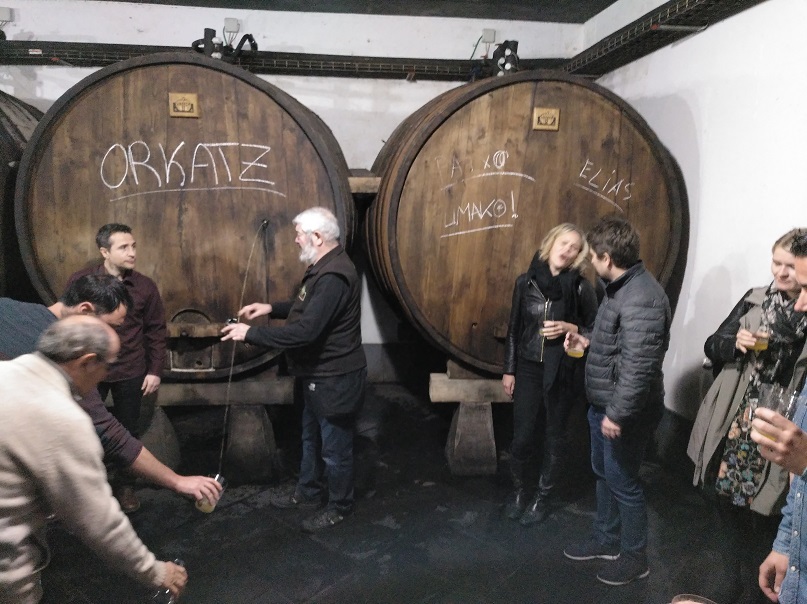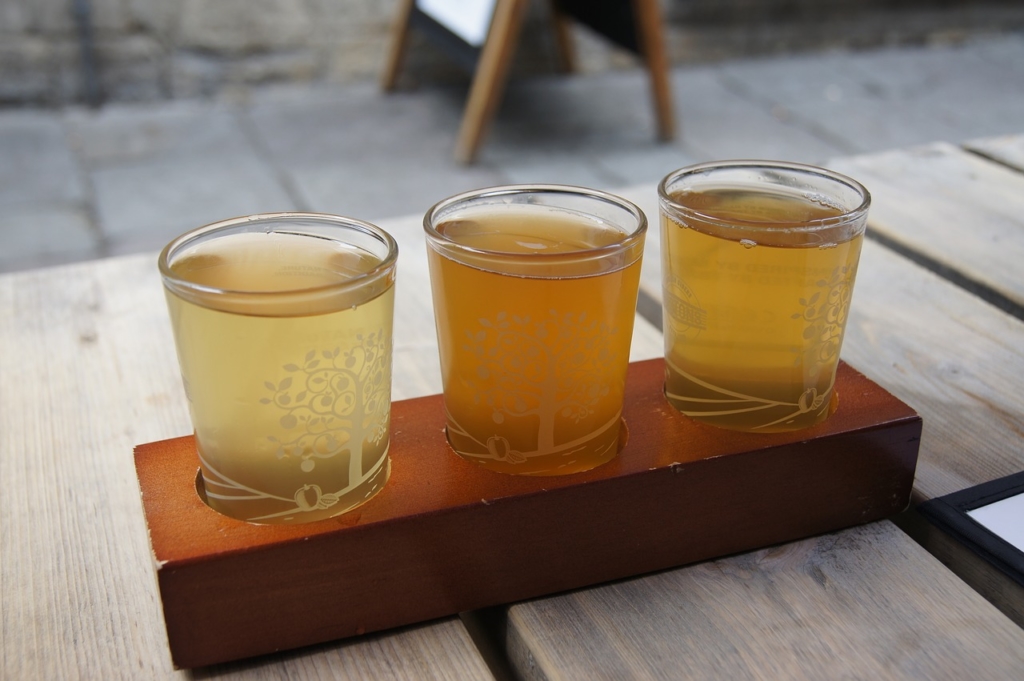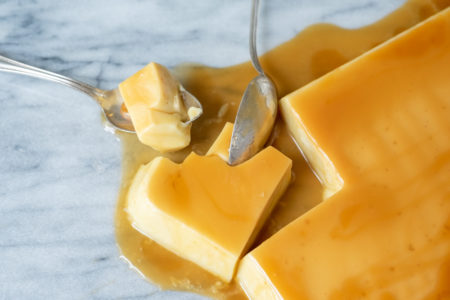The Basque country of Spain is nestled along the French and Spanish border between the Western Pyrenees and the Bay of Biscay. This region, known as Euskal Herraria in the Basque language, has been home to the Basque people for thousands of years. The Basque country encompasses a diverse landscape that includes an inland mountain range and a long ocean coastline, which provide a variety of different foods to the region.

One of the many pillars of Basque cuisine is hard cider, or sargardoa, which is usually consumed in a cider house or sagardotegiak. At these cider houses, cider is served directly from the giant barrels in which they are fermented. Unlike most traditional bars or taverns where you request a drink when you want one, the basque cider house operates on its own schedule. At Basque cider houses an employee will open the tap to a barrel, which emits a long stream of cider that patrons can hold their glasses under to collect. Throughout the day the employee will rotate through a variety of barrels so that patrons can taste the subtle differences between each cider.

Basque cider is unique in that it is very dry and flat; it is a world away from the sweet, highly carbonated hard ciders found in the United States. Basque cider does not emit obvious apple flavors or aromas, instead, the flavors highlight the yeast strains found in each fermentation barrel, which can exhibit a variety of different flavors. The result is a tart, slightly bitter beverage with complex flavors that range from bright and citrusy to earthy and woodsy.
Basque cider is spontaneously fermented, which means that no commercial yeasts are added; yeasts naturally occurring on the fruit jumpstart the fermentation process. The apples used to make Basque cider are very important, despite the fact that the cider may not explicitly taste like apples. Over 100 different varieties of apples are used to produce Basque cider and sometimes over 40 different apple types will be reflected in a single glass of cider. There are some bottled varieties of Basque cider that are imported to the United States, but to truly taste Basque cider you have to go straight to the source. Cider season runs from January to April, but many cider houses operate throughout the year. With the hundreds of Basque cider houses in operation you’ll have plenty of options and glasses to choose from.



